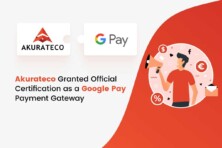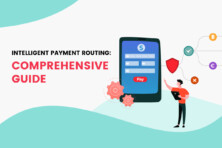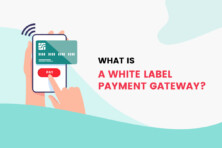
Vladimir Kuiantsev
CEO of Akurateco
If the allocated for the payment tech team budget seems to disappear month after month, it might be a sign for you to move on and change your payment approach. The costs are growing, the efficiency of the stand-alone in-house team is decreasing, and the technology never seems to meet your audience’s expectations? These are your cues that it’s high time you switched your payment system for a white-label solution.
In this article, we will explore the signs screaming for a change and explain a process of switching to a payments orchestration platform step by step.

How to Understand When It’s Time to Switch to a Payments Orchestration Platform. Source:
How do you know when it’s time to choose a payments orchestration platform?
1. Your tech team is no longer enough.
There is a limit to everything. And even your team of seasoned payment experts have their limitations.
Thus, if your sales volumes are growing, and you notice that they can no longer cover and meet the needs of your business, take a hint – and consider an external solution.
A payments orchestration platform, besides offering a variety of connectors and simplified data management, also guarantees solid technical assistance on the side of the technology provider. When chosen right, a WL payments provider will act as your outstaffed technical team, fully competent and always ready to help.
2. Your paytech team expenses are more than you can handle.
Hiring an in-house team of payment experts can be costly. We’ve recently conducted our research on how much it would cost to develop your own payment system and then maintain it in-house. The results are staggering.
Thus, developing a payment platform with only basic functionality will cost your company between 105.000 and 420.000 USD. And the expenses don’t stop there. From this time on, you will need to hire a team to support your transaction flow.
An average monthly salary for an experienced professional to manage and monitor your payment flow is around USD3500. Depending on your transaction volumes, you’ll need between three to five people. All things considered, having an in-house team will cost you up to 17.500USD a month (no bonuses and office perks included).
These costs will be significantly lower with a WL solution. You will only need to cover the setup and monthly fees. The compensation of the expert team is 100% on the solution provider.
3. Your technology stack is outdated.
The expectations of your target audience are high. Used to uninterrupted payment flow and high-end tech solutions, clients won’t tolerate a mediocre tech set. They’ll quit – and find an innovative provider.
To lay your hands on state-of-the-art technology without robbing the bank, opt for a payments orchestration platform. Its provider aiming to win over customers in a market with fierce competition is likely to offer you top-of-the-class technology and functionality.
4. Your key team player left. And you can’t find a new one.
The market is empty. Well, not entirely. Yet, hiring an expert is an extremely difficult task these days. While you’re searching for a key talent, a tech Lead or a DevOps, your payment system is bleeding. It needs professional “grooming” – and you can’t provide it.
If so, it’s time for you to switch to a WL payment system. Fully staffed and often built from scratch by paytech experts, the technology will meet and exceed all your payment needs.
Now that you understand when to switch to a new system, we’ll walk you through the migration process step by step.
What to take into account when switching to white-label payments
1. Historical data import.
When you’re switching to a different payment solution, you have to import all the historical data accumulated over the years of transaction processing on a single platform. This data includes but isn’t limited to your transaction stats, recurring payments, refunds history, etc.
The details of this step depend on your date range and the volumes of transactions processed. Make sure to get clear instructions on how to transfer all data between systems to avoid breaches and loss of important data.
2. Anti-fraud settings import.
As you move towards a new platform, you should also transfer all the anti-fraud module settings with you. Consider migrating whitelists and blacklists to have your data protected from online fraud and elaborate data theft from day one on a new platform.
3. Request all the necessary connectors.
You must ensure that all the payment methods and connectors to banks your customers previously used, are available in a system you are shifting to.
If some of the connectors you require are missing, request its development in advance. Integration of a new payment method might take weeks (up to two weeks with Akurateco). So, you need to make the arrangements beforehand not to waste precious time and money in lost sales while it is being developed.
4. Enable smooth onboarding for merchants.
Your customers should not have to worry about the translation. And in order to ensure this, please offer them a smooth and uninterrupted transition. For it, we recommend establishing clear communication with your customers and walking them step by step through the integration. Besides, start the token migration process in advance.
5. MID migration.
Finally, last but not least take your time not only to migrate MIDs but also to test them. Spotting malfunctioning on the early stages can save you thousands of dollars and a reputation.
These are the basic steps you need to bear in mind after you decide to switch to a payments orchestration platform. The specifications might vary depending on the type of your business, your monthly sales volumes and any specific arrangements you had with your previous payment service provider. But we aimed to create a clear outline of the process to help you along the way.
Should you have more questions about the transition, we at Akurateco would be happy to share from our years of experience in the payment industry and introduce you to one of our white-label solution to best fit your business needs. Let’s stay in touch!
Vladimir Kuiantsev is the CEO of Akurateco, a cutting-edge SaaS platform with 70+ connectors catering to international businesses. With 10+ years of experience in the payment industry, he’s successfully founded and grown two major payment startups before becoming an executive at Akurateco.
SEE ALSO:









